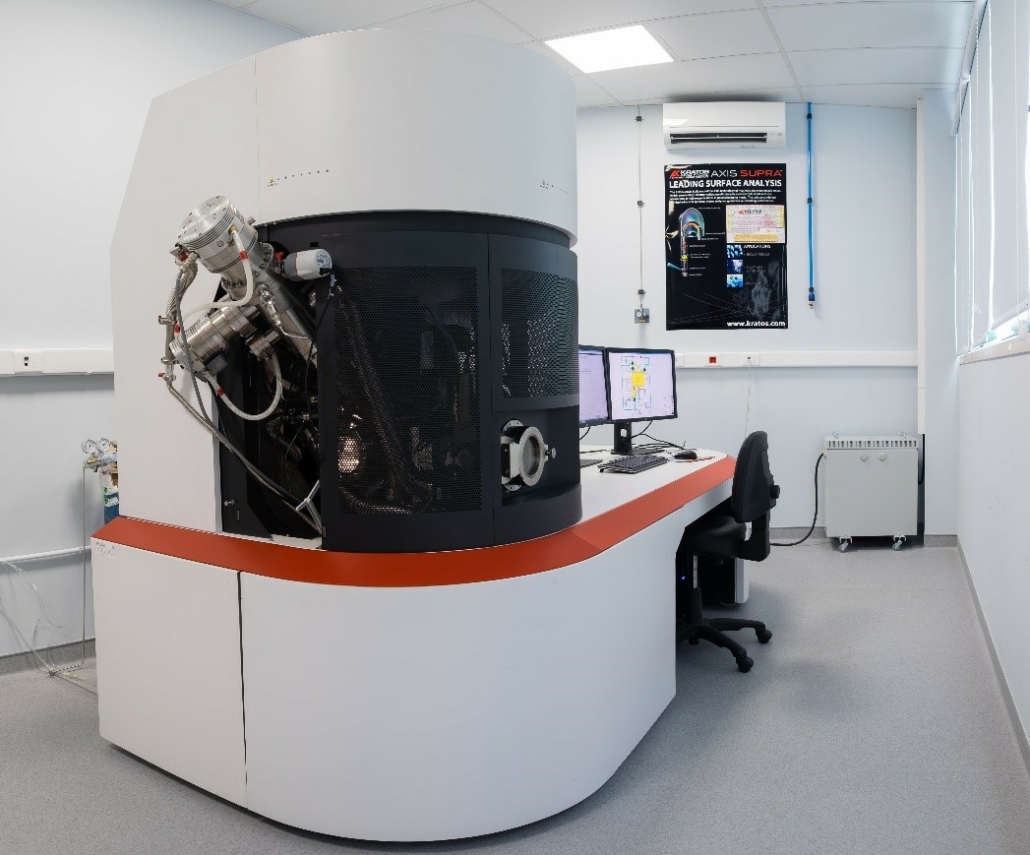X-ray and ultraviolet photoelectron spectroscopy (XPS/UPS)
About
UNINOVA offers characterization of surfaces in terms of chemical (oxidation states) and elemental constitution as well as surface potentials (including work functions). In depth-resolved analysis is provided by argon cluster depth profiling.
Description
Core competences:
- Assistance in planning of surface analysis experiments
- Data treatment by curve fitting for chemical state analysis (CasaXPS)
- Study of surface potentials of semiconductors (work function, ionization potential)
- Spectroscopic measurement of Schottky barrier height with gold and silver
Tools:
- Kratos AXIS Supra XPS/UPS
- Extorr XT100M quadrupole mass spectrometer (coupled to the XPS)
Technical specifications:
Equipment: Kratos AXIS Supra
Capabilities:
- Monochromatic Al source (1486.6 eV) and monochromatic Ag source (2984.3 eV)
- Argon cluster sputter gun (up to 2000 atoms)
- Heating and cooling in load-lock and analysis chamber (-120°C to 800°C)
- Helium discharge lamp for UPS (He I: 21.22 eV, He II: 40.8 eV)
- Ion scattering spectrometry (ISS)
- Electron-only charge neutralization
- Rapid “snapshot” spectroscopy
- Angle-resolved measurement and azimuthal rotation
- Sample transfer chamber for transport of air-sensitive samples
- In situ metal deposition (Au, Ag)
- Thermal desorption spectroscopy
Specifications:
- Sample holder size 9 x 3 cm (recommended sample size: 1×1 cm2– 2.5×2.5 cm2)
- Excellent compromise between energy resolution and sensitivity:
o 0.44 eV at 200 kcps (XPS)
o 0.60 eV at 2 Mcps (XPS)
o 0.01 eV at 1 kcps (UPS)
- Lateral resolution for spectroscopy: 15 µm
- Imaging capability with lateral resolution of 3 µm and infinite size (by image stitching)
Case study:
A user may be interested in the surface potentials of an oxide semiconductor and the relation with the chemical composition. These properties may depend on the amount of oxygen and the user could intentionally reduce the surface by in situ annealing in vacuum. In parallel the user may evaluate the Schottky barrier height by depositing gold or silver in situ. Furthermore, the distribution of elements throughout the film thickness may be studied by depth profiling.
Optional:
https://doi.org/10.1002/aelm.202000242
https://doi.org/10.1002/aelm.201900958
https://doi.org/10.1021/acsaelm.9b00652
https://doi.org/10.3390/nano9091273
Access Provider / Facilities




